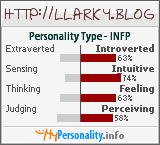
1. Dopamine's role in reward
Three competing explanatory categories
A) Liking -> the hedonic impact of reward
B) Learning -> learned predictions of future reward
C) Wanting -> motivate the pursuit of rewards by attributing incentive salience.
(wanting hypothesis is more consistent with evidence)- anticipatory desire
2. Inhibition of prolactin(PRL) or luteotropic hormone (LTH)- peptide hormone
- associated with lactation
- Lactogenesis<-> Oxytocin
- synthesised and secreted by sex binding lactotrope cells in the adenohypophysis (anterior pituitary gland).
- also produced in the breast, the decidua(uterine lining during the pregnancy), parts of the central nervous system, the brain, and the immune system.
- Effects:
A)regulating lactation(stimulation of the mammary glands)
*interesting fact -> Sometimes, newborn babies (both males/females) secrete a milky substance from their nipples. They are commonly known as witch's milk. This is caused by the fetus being affected by prolactin circulating in the mother just before birth, stops right after.
B)orgasms
Prolactin counteracts the effect of dopamine which is responsible for sexual arousal. High amounts of prolactin are suspected to be responsible for impotence and loss of libido.
C)proliferation of oligodendrocyte precursor cells.
These cells are responsible for the formation of myelin coatings on axons in the central nervous system.
D)contributes to surfactant synthesis of the fetal lungs at the end of the pregnancy
immune tolerance of the fetus by the maternal organism during pregnancy.
Decreases normal levels of sex hormones. Inhibition of sex steroids responsible for loss of the menstrual cycle. Delays hair regrowth in mice.
3. Reinforcement
A) provides feelings of enjoyment and reinforcement
B) Dopamine is released (particularly in areas such as the nucleus accumbens and prefrontal cortex) by naturally rewarding experiences such as food, sex, drugs, and neutral stimuli that become associated with them.
C) aggression may also stimulate the release of dopamine in this way.
D) cocaine, nicotine, amphetamines increase dopamine in the mesolimbic reward pathway of the brain.
*Interesting fact
neurobiological theories of chemical addiction (not to be confused with psychological dependence), arguing that this dopamine pathway is pathologically altered in addicted persons.
4. Cocaine/amphetamines and dopamine
Cocaine and amphetamines inhibit the re-uptake of dopamine.
Cocaine is a dopamine transporter blocker that competitively inhibits dopamine uptake to increase the lifetime of dopamine and augments an overabundance of dopamine (an increase of up to 150 percent) within the parameters of the dopamine neurotransmitters.
*Reuptake is necessary for normal synaptic physiology because it allows for the recycling of neurotransmitters and regulates the level of neurotransmitter present in the synapse and controls how long a signal resulting from neurotransmitter release lasts.
Like cocaine, amphetamines increase the concentration of dopamine in the synaptic gap, but by a different mechanism. Amphetamines are similar in structure to dopamine, and so can enter the terminal button of the presynaptic neuron via its dopamine transporters as well as by diffusing through the neural membrane directly. By entering the presynaptic neuron, amphetamines force dopamine molecules out of their storage vesicles and expel them into the synaptic gap by making the dopamine transporters work in reverse.
5. Dopamine, learning, and reward-seeking behavior
A) Dopaminergic neurons of the midbrain are the main source of dopamine in the brain.
B) Involved in the control of movements, the signaling of error, motivation and cognition.
*Depletion of cerebral dopamine = Parkison's disease
*Dopamine dysfunction associated with Schizophrenia, autism, attention deficit hyperactivity disorder, drug abuse.
C)firing of dopaminergic neurons -> motivational substance as a consequence of reward-anticipation.
D)reward neurons predominate in the ventromedial region in the substantia nigra pars compacta as well as the ventral tegmental area. Neurons in these areas project mainly to the ventral striatum and thus might transmit value-related information in regard reward values.

E)the nonreward neurons are predominate in the dorsolateral area of the substantia nigra pars compacta which projects to the dorsal striatum and may relate orienting behaviour.

It has been suggested that the difference between these two types of dopaminergic neurons arises from their input: reward linked ones have input from the basal forebrain while the nonreward related ones from the lateral habenula
source: mostly wikipedia, the rest? I don't remember. Sue me, if you got any problem. Non me ne frega niente.

No hay comentarios:
Publicar un comentario